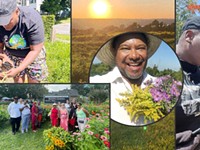[
{
"name": "500x250 Ad",
"insertPoint": "5",
"component": "15667920",
"parentWrapperClass": "",
"requiredCountToDisplay": "1"
}
]
Christine Burkey-Kelly was 38 years old when she got into triathlons. She quickly found out that not only was the female 40-49 age group the largest at just about every event, but those women also had faster times than those in their 20's.
"When women get to that magic number of 40 years old, they start to look at their life in different ways, often saying, 'Is this what I want to be? Is this what I want to be doing? Do I have other aspirations?'" Burkey-Kelly says. "Women in this age group are driven, very motivated, very assertive. They have a plan and they are sticking to it."
Burkey-Kelly became interested in triathlons when a group of coworkers — one of whom was an ex-Navy Seal swimmer — needed a cyclist for their swim-bike-run team to enter the Shoreline Triathlon. Burkey-Kelly had a mountain bike, so she gave it a shot. The team won first place.
Not long thereafter, a friend convinced Burkey-Kelly to do an individual triathlon. "I had 10 pounds of baby weight I could not get rid of," she says. "I would go to the gym and do something like the elliptical. It was boring. I wasn't motivated. I needed a goal, and even though I had never been a runner or a swimmer, it was a new challenge and I did it."
In her first individual sprint triathlon, she did the entire swim in a breaststroke without getting her hair wet.
Burkey-Kelly has traveled a long distance from where she started as someone who "never considered [herself] athletic." She was "the geeky one," in the high school National Honor Society, doing spelling bees. Then, there simply wasn't time as she had to work — Burkey-Kelly currently owns Westin Development — got married, and had children.
"When you're five miles away from home, there's no way of hitting the stop button," Burkey-Kelly says. "You have to get home. There are a lot of psychological games you have to say to yourself to get to the next point. Walk around the block. Then run in between phone poles, then two telephone poles — it can be that basic. Breaking it down is what it all amounts to."
This last winter, Burkey-Kelly broke down and signed up with a swim coach. She had already progressed past her mountain bike; it was time to up her game.
Her goal this year — now seven years into the sport — is to try to podium at every race. Burkey-Kelly is involved in the 100-mile ride for Missing & Exploited Children and the Rochester Kids Triathlon. And this year, along with co-captain Charlie Anderson, she leads the inaugural year of the Bike Zone Multisport Team.
There are more than 200 racing events in Monroe and its neighboring counties — predominantly from April through October — ranging from 5K's to the Peasantman, which has a whopping combined 144.6 miles. And a community of enthusiastic, like-minded athletes has grown in the region to train and meet the challenges. Men, women, and children wearing numbers show up to events in everything from tried-and-true gym shorts to equipment costing upwards of $20,000. The Rochester area offers races and training for athletes of all levels, and many of the participants will be more than happy to share their experiences as they welcome beginners into their world.
Helping people break it down to build it up, as Burkey-Kelly recommends, is something a surprising number of businesses and programs throughout the area offer. In addition to the Bike Zone Multisport Team, there are other sign-up teams through Park Ave Bike Shop, Towpath Bike Shop, and Fleet Feet. You can find training at area YMCA's and municipal aquatic centers. And you can find triathlon coaches certified by USA Triathlon, the national governing organization for multisport disciplines.
Ellen Brenner started doing triathlons in the late 1990's. She and her husband, David "Boots" Boutillier, own both of the Fleet Feet stores and Yellow Jacket Racing. Among the events they manage is the Flower City Challenge weekend, originally set up as only a half marathon.
"We got involved with Flower City with a goal to showcase the city and its river-way and parks," Brenner says. "The run-bike-run and the run-bike-paddle were added about five years ago. The run-bike-paddle triathlon is so rare that most people use it as a once in a lifetime or a once in a year experience."
Brenner believes that Rochester has more races per capita than any other U.S. city. "There is a race almost every weekend in Rochester, and some weekends there are up to four races," Brenner says. She estimates that this year's Flower City triathlon will have about 600 entrants.
There are more than 15,000 entrants between the various events of the Flower City weekend, the Rochester Marathon, and the Turkey Trot, and Brenner estimates that in the course of just one season, Yellow Jacket Racing will issue about 20,000 bib numbers.
"So many people don't know how to get started in an event," Brenner says. "We provide the opportunity through programs like No Boundaries to try something new, safely."
Brenner thinks there are many reasons people get up off the sofa and get involved in the sport of triathlon, from a desire to get healthier to raising money for a cause. She believes that completing a triathlon can transform someone's life.
"Absolutely! Absolutely!" Brenner says. "I've seen it thousands and thousands of times."
Getting into triathlons, you quickly learn about training groups. It's the triathlete version of happy hour: hooking up with others for a ride, run, or swim, and instead of alcohol, it's endorphins. Amateur endurance athletes are upbeat in packs, perhaps because so much of the training is otherwise solo.
One area group is the Rochester Area Triathlon Society, now offering multiple, different weekly workout opportunities at Webster Park, Durand Eastman Park, Braddock Bay, and Greece Odyssey High School. This year RATS is also partnering with Peasantman to offer a 10-race series, adding to annual events of the Rochester Triathlon and the Rochester Kids Triathlon. In the winter, the group does workouts at the Maplewood YMCA and at the Webster Aquatic Center.
A runner since middle school, Jeff Ouriel didn't start multisport until 2001, when he suffered a stress fracture after running his first marathon. "I couldn't run, so I took up riding bicycles, and I started duathlons," Ouriel says. "I did my first triathlon a couple of years ago."
Ouriel lives in Greece and balances family and work as a teacher with his passion for athletics. His sons Jacob, 12, and Ben, 10, are also getting involved in kids' triathlon.
Ouriel is once again president of RATS "because someone needed to take the reins." As with so many area groups, it's all about volunteers and people willing to take on leadership roles with no pay.
Offering training rides and timed events from April to October, the RATS company line is, "Turning beginner triathletes into experienced ones."
Heading into their first winter off-season, many multisport athletes can be nervous they'll lose momentum. But there are programs to help many — especially the adventurous — stay dedicated year-round.
The Freezeroo race series, hosted by the Greater Rochester Track Club, is a series of six races, held regardless of the weather, from late December into mid-March. Races take runners from 5K to 8 miles in conditions ranging from sunny and in the 50's to sub-zero temperatures and winds gusting over 50 miles per hour off Lake Ontario.
"Freezeroo provides that environment where runners are going to be with other people just as crazy as you," says Wilton Alston, president of GRTC. "Runners like to run. Runners try at all costs to find a way to keep running. They're sitting at home seeing it snow and thinking 'Let's go run!'"
Before Alston did Freezeroo, he was doing the Polar Cats, a similar winter race series. "I had to find some structured way to run during the winter," he says.
Winter races, says Alston, are not always about elite runners or being the fastest in an age group.
"It's about enjoying the camaraderie and the interaction. These people tend to be sociable people," he says.
The GRTC Freezeroo offers two things you can't find anywhere else on this circuit: a low entry price for the series and post-race lodges filled with hot comfort foods, including homemade soups. Alston describes the post-race lodge setting as a "personal therapy group," remembering that at one race a woman came up to him, almost in tears, saying she couldn't believe how nice the people were being at the race. "That's what's supposed to happen," he adds.
The Freezeroo averages about 175 people per race, and it allows slower runners a 20-minute early start time. There are runners and then there are subsets of runners, Alston says: those who do trails, for instance, and those who do Freezeroo.
Alston, a research scientist, has run in events for more than 35 years. He ran his first marathon as a result of being talked into it over the course of winter races one year. Now he's run 18 marathons, and he's done four Ragnar overnight team relay running races. Ragnar Relays are the trending run, drive, sleep, repeat relays covering 200 miles in two days. He used to find training to be a part-time job, but, he says, "I've gotten beyond that negative approach."
Training in multisport, for the amateur athlete, seems to hover around 12 hours per week. Whether you call it a part-time job or a passion, it requires something beyond what most of us think of as work-life balance.
"One thing that helps is having your spouse involved in it also," says attorney Steve Levitsky. "It's a difficult balance. My wife and I alternate. I do more evening workouts; she does more mornings. I do more Saturdays; she does more Sundays. And we make sure that at least one of us attends all of our kids' events."
Levitsky started running in 1991 and began entering marathons in 2001. He got seriously into marathoning in 2007 and crossed into the world of triathlons in 2012. "My wife got involved in triathlons. I had done a lot with my running, and I thought, why not take some swimming lessons and give it a try," Levitsky says. "It took me a whole winter of swimming lessons to get barely competent."
Levitsky, who says he wishes he had "learned to swim as a child instead of faking it," already knew how to run and saw the biking as "a matter of getting on the bike and going."
But when he took to the water, he quickly figured out that the first thing he had to learn was that "by killing yourself in the water, you're not going to get anywhere."
"It's harder for runners and bikers to cross over to the dark side."
His first triathlon was the Pittsford Triathlon, which consists of an indoor swim, followed by an outdoor bike ride and run. Another stage of triathlon challenge for Levitsky was the Sodus Point Triathlon, where the swim stage is conducted in Lake Ontario.
"During the swim at the Sodus Point Tri, I was basically trying to figure out if I could throw up and swim at the same time," because of the motion of the lake, Levitsky says. "But then when I did Peasantman, I had already experienced waves and the lack of visibility and, in comparison, it wasn't as bad. As hard as it was to do the Sodus Point Triathlon, I would definitely do it for the experience."
In addition to the challenges of learning to swim efficiently and facing an open water swim in Lake Ontario, Levitsky describes the challenge of learning to eat during long-distance events.
"Nutrition is the fifth event in the triathlon," Levitsky says. "It's swim, bike, run, transition, and nutrition."
He counsels the importance of trying different things in training and not trying anything new on a race day. Levitsky speaks the endurance-athletics vocabulary of GU Energy Gel and peanut butter, adding in salt potatoes, and flat Coke ("the ultimate rocket fuel").
A self-described "lunatic" — notably not the only person I interviewed with this self-descriptor — Levitsky's 2014 season contains more than 20 events, including three marathons, two 50K runs, a half Ironman, and a 50-miler.
Levitsky was headed to the pool even as he said, "The key is working hard on the event you're weakest at."
"It takes seven years for your skeletal structure to compensate and create new stress points to be capable of taking the beating you put on them during these events," says Joe McMahon, one of the founders of Peasantman Steel Distance Triathlon in Penn Yan. McMahon completed his first Olympic distance triathlon at Hamlin Beach in 1990.
It's not just the training over a period of years that McMahon sees as crucial to completing a full Peasantman event at 144.6 miles total; it's having the drive. "When you're out there for 12 to 17 hours, you cannot survive on PowerBars, GU's, and plain bagels. You gotta love what you're doing."
And love it McMahon does. His daily training regimen, which he has followed for 25 years, is two to two and a half hours, seven days a week. At Hamlin Beach, McMahon says, "I realized that I was never going to be the fast guy, but potentially, I was going to be the guy who does the long distance."
It's not just the distances or durations that challenge the multisport athlete, McMahon says, it's the difficulty of the course. "The Lake Placid Ironman is the toughest, the most brutal," he says.
"Any beginner that goes there for their A-game race is crazy," he says. "It has two loops with six major climbs. It tears you apart. At one point, it was considered the hardest Ironman in the world."
But McMahon's dreams for the sport of triathlon exceeded individual competitive goals. He worried that the sport was losing its purpose. "It had become a sport where people were muscling out just to get branded with the Ironman symbol," McMahon says. "The prices started going up; the fun started going down. We're bringing the fun back to tri."
Peasantman held its first competition last season, drawing 194 participants from several states and also Canada. People have already signed up for 2014. The course was designed by Jim Hogan at Geneva Bikes, using loops to allow athletes to easily access their special foods. As McMahon says, "You gotta eat or you're gonna bonk."
McMahon describes running the event as putting up a tent city and then responding to athletes with a million questions. For him, the way to achieve balance between family, education, self-employment, and launching his own race events has been multitasking.
"I realized a long time ago that nobody cares what I do before 8 a.m." McMahon says. "I started getting up at 5 a.m. every morning. I built a desk over the top of my cycling trainer. I do what my wife and daughter need first and I schedule around that calendar. You can throw in a load of laundry before hopping on the bike," McMahon says.
While no one I interviewed seemed to know exactly why, our area has become home for so many multisport events. Ideas ranged from the abundance of waterways to the willingness of municipalities to work with race directors to the sheer number of people eager to take on a new fitness challenge. Everyone interviewed has traveled for events, but they all return home for 12-month training, focusing on weaknesses and facing adversity.
But there was definitely a common theme: "camaraderie."
"I set new challenges all the time, pushing myself to do greater distances each year, longer distance runs, longer distance bike rides outside of the tris, but what keeps me in it is the people that I have met," Burkey-Kelly says. "I have met some incredible people — inspiring, motivating, encouraging, down-to-earth-good people."
Speaking of...
-

Film Review: "Need for Speed"
Mar 17, 2014 -
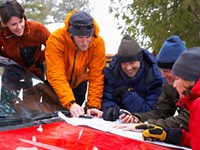
WINTER GUIDE: Good cold fun
Jan 22, 2014 -

On the right track
Oct 2, 2013 - More »
Latest in Culture
More by Paloma Capanna
-
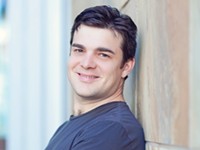
CLASSICAL | Rochester Philharmonic Orchestra
Apr 9, 2014 -
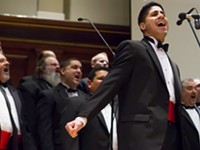
POP/CLASSICAL | Rochester Gay Men's Chorus
Mar 26, 2014 -
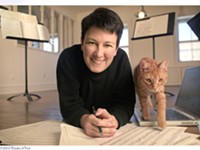
CLASSICAL | ESM Women in Music Festival
Mar 26, 2014 - More »
Readers also liked…
-

Telltale signs
May 17, 2024


